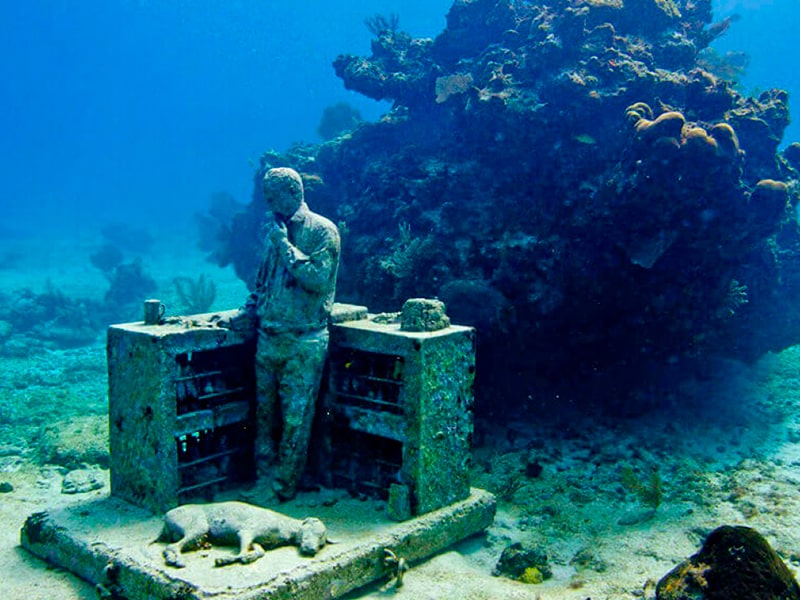Our entry-level dive courses teach us about the causes and outcomes of diving accidents. Every good dive briefing should include information about how to avoid dangerous situations, and emergency procedures for coping with them should they arise. With sufficient training and preparation, we can easily avoid most diving accidents. Nonetheless, every diver should have at least a basic understanding of what to do if things go wrong. Although the danger potential may seem high, diving is actually a relatively safe sport when conducted sensibly. A roundup of data from the U.S., the U.K., Canada and Japan shows that the statistical chance of fatality while diving is 2-3 per 100,000 dives. The following list of rules is by no means exhaustive, but offers basic rules to minimize the likelihood of a dive accident.
1. Never hold your breath
As every good entry-level dive student knows, this is the most important rule of scuba. And for good reason — breath holding underwater can result in serious injury and even death. In accordance with Boyle’s law, the air in a diver’s lungs expands during ascent and contracts during descent. As long as the diver breathes continuously, this is not a problem because excess air can escape. But when a diver holds his breath, the air can no longer escape as it expands, and eventually, the alveoli that make up the lung walls will rupture, causing serious damage to the organ.
Injury to the lungs due to over-pressurization is known as pulmonary barotrauma. In the most extreme cases, it can cause air bubbles to escape into the chest cavity and bloodstream. Once in the bloodstream, these air bubbles can lead to an arterial gas embolism, which is often fatal. Depth changes of just a few feet are enough to cause lung-over expansion injuries. This makes holding one’s breath dangerous at all times while diving, not only when ascending. Avoiding pulmonary barotrauma is easy; simply continue to breathe at all times.
2. Practice safe ascents
Almost as important as breathing continuously is making sure to ascend slowly and safely at all times. If divers exceed a safe ascent rate, the nitrogen absorbed into the bloodstream at depth does not have time to dissolve back into solution as the pressure decreases on the way to the surface. Bubbles will form in the bloodstream, leading to decompression sickness. To avoid this, simply maintain a rate of ascent no faster than 30 feet per minute. Those diving with a computer will be warned if they are ascending too fast, while a general rule of thumb for those without a computer is to ascend no faster than their smallest bubble.
Always remember to fully deflate your BCD before starting your ascent and never, ever use your inflator button to get to the surface. Use the acronym taught to new divers to explain a five-point ascent: Signal, Time, Elevate, Look, Ascend (STELA). Unless worsening surface conditions, diminished air supply or any other serious mitigating factors make it unsafe to do so, always perform your 3-minute safety stop at 15 feet, which provides a barrier of conservatism that significantly decreases your chances of decompression sickness. A recent paper on diving fatalities that combined research from the Diver’s Alert Network (DAN) in the U.S. and Australia and BSAC in the U.K. showed that an uncontrolled ascent was the precipitating factor in 26 percent of the fatalities analyzed.
3. Check your gear
Underwater, your survival depends upon your equipment. Don’t be lazy when it comes to checking your gear before a dive. Conduct your buddy-check thoroughly —if your or your buddy’s equipment malfunctions it could cause a life-threatening situation for you both. Make sure that you know how to use your gear. The majority of equipment-related accidents occur not because the equipment breaks but because of diver uncertainty as to how it works.
Make sure you know exactly how your integrated weights release and how to deploy your DSMB safely, and that you know where all the dump valves are on your BCD. If you are preparing for an unusual dive, make doubly sure that you’ve made all the appropriate equipment arrangements; for example, when getting ready for a night dive, do you have a primary torch, a backup and a chemical light? Are they all charged fully? If prepping for a nitrox dive, have you made sure to calibrate your computer to your new air mix? Being sufficiently prepared is the key to safe diving.



